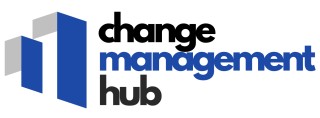-large-teaser.webp)
Understanding the Need for Process Change
The Importance of Identifying the Need for Change
In the realm of change management, understanding the need for shifting process is pivotal. Organizations evolve, and it is crucial for a business to identify when a change is necessary to meet work goals. The initial step requires thorough evaluation of current processes to pinpoint areas of improvement. Recognizing the need for organizational change can significantly steer your team towards effective, purposeful actions.
Assessing Organizational Needs
A successful change initiative begins with a clear understanding of the organization’s comprehensive needs. When assessing these needs, incorporate both qualitative and quantitative data to establish a solid foundation for goal setting. Such an analytical approach not only ensures specific measurable results but also paves the way for setting smart goals that align with the broader business objectives.
Exploring Workflow and Efficiency
The effectiveness of a change process is often determined by its impact on workflow and efficiency. By scrutinizing your organization’s workflow, you can better identify gaps and opportunities for improvement. This can directly contribute to achieving team goals and enhancing overall productivity. For insights on optimizing workflow through automation, explore ways of enhancing business efficiency.
Aligning Change with Long-term Strategy
Before diving into the management process, it’s paramount to align the proposed changes with the organization’s long-term strategy. This alignment aids in setting achievable goals that contribute to sustained growth and development. As you embark on this journey, remember that strategic alignment can significantly enhance the effectiveness of change initiatives and elevate overall leadership capacity.
In summary, comprehending the need for change sets the tone for the entire change management journey. It ensures that your efforts are directed towards effective process goals and helps you track progress in a meaningful manner. As you proceed, bear in mind that a well-structured need analysis will lay the groundwork for setting smart, time bound goals that your employees can rally behind.
Setting Clear Work Goals for Change
Defining Objectives Aligned with Organizational Needs
In the process of change management, setting clear work goals is critical. These goals should be aligned with the broader organizational objectives. By setting SMART goals (Specific, Measurable, Achievable, Relevant, and Time-bound), the management process will benefit from a structured pathway to achieving results.
- Specific Measurable Goals: Goals should be well-defined to provide clarity. Specific goals help teams and employees understand the expectations and focus their efforts on what truly matters to the organization.
- Time-bound Goals: Establishing deadlines is crucial to maintaining momentum in progress. It ensures that team members remain committed to delivering results within a specified timeframe.
When setting goals, consider the roles of leadership and team dynamics. Engaging the team in the goal-setting process can foster ownership and dedication to the change process. Business objectives, such as improving efficiency or fostering innovation, should serve as the guiding framework for these goals.
Utilizing Lean Six Sigma methodologies can support the goal-setting process by providing insights into process optimization and enhancing goal alignment across various departments. This approach encourages continuous improvement and data-driven decision-making, which are essential to achieving successful change and tracking progress over time.
Overall, these best practices in goal setting are fundamental in ensuring that organizational change efforts are directed and impactful, paving the way for long-term success and adaptability.
Engaging Stakeholders in the Change Process
Creating a Collaborative Change Environment
Successfully engaging stakeholders in the change process requires a strategic approach that incorporates clear goal setting. By setting specific, measurable, achievable, relevant, and time-bound (SMART) goals, you lay a solid foundation for collaboration and productivity.
Involving key team members and organizational leaders early in the change process ensures that everyone understands the reasons for the change and the end goals. It’s crucial to communicate how these changes will affect individual roles and the overall business objectives. This clarity helps in crafting a shared vision and can facilitate the transition by reducing uncertainties.
Establishing clear channels for communication allows all parties to express concerns, provide feedback, and contribute ideas. This engagement builds trust and encourages team members and employees to take ownership of their roles within the management process.
- Foster Transparency: Regular updates on progress and next steps help maintain momentum and keep the team informed.
- Encourage Participation: Creating spaces for employees to participate in decision-making can lead to more innovative solutions and smoother implementation of changes.
- Provide Support: Offering resources, training, and time for people to adjust to new processes generates confidence and competence within the team.
This collaborative effort not only helps achieve specific goals but also strengthens the organizational structure, enabling your team to adapt more readily in future strategies. Read more about how Agile methodologies can enhance your approach to engaging stakeholders.
Overcoming Resistance to Change
Addressing Pushback and Building Support
Resistance is a common hurdle faced during any change initiative. As goals and processes evolve, it is crucial for organizational leadership to recognize and address the underlying reasons people might resist changes. Understanding these reasons will help in creating strategies to effectively manage and overcome resistance. Generally, resistance stems from fear of the unknown, confusion over the changed approaches, or perceived threats to job security. To counteract this, leaders should focus on clear communication and provide reassurance through regular updates. Clearly explaining the expected benefits of a new process or goal, combined with addressing concerns, significantly aids in creating a supportive environment. Several best practices can assist in reducing pushback during the change management process:- Engage with team members proactively to clarify how the changes align with specific measurable objectives and improve long term outcomes.
- Incorporate feedback from employees to refine the setting process and ensure it reflects achievable goals.
- Recognize and reward team accomplishments, fostering motivation and helping to track progress.
- Offer professional development opportunities which will enhance skills required to meet the new goals and adapt to changes.
- Encourage team goals setting, allowing people to take ownership and actively participate in the change journey.
Measuring Progress and Success
Monitoring Progress and Evaluating Achievements
An integral part of achieving effective work goals in the context of process change is the continuous measurement of progress and success. Establishing clear, measurable criteria upfront is crucial for tracking progress and ensuring that the transformation is on the right path. Management plays a key role in setting specific, measurable, achievable, relevant, and time-bound (SMART) goals that align with organizational objectives.
Regular check-ins with team members allow for the monitoring of team goals and process goals. This interaction not only provides transparency but also helps identify potential roadblocks early on, enabling timely adjustments to the change management process. Employees should feel empowered to share their insights and provide feedback, fostering a collaborative environment where progress is both tracked and celebrated.
Implementing best practices in goal setting and management ensures that progress indicators are not only evident but also meaningful. A clear understanding of what success looks like will help set achievable goals that motivate the entire team. Progress should be reported in a manner that keeps everyone informed, driving momentum while maintaining a focus on long-term success.
The utilization of specific tools and methodologies can further streamline this process, ensuring that the change process remains on target. For instance, using dashboards and key performance indicators (KPIs) can offer a visual representation of how the change initiative progresses over time, aiding both leadership and employees in aligning efforts with the overarching business goals. This structured approach makes it easier to track progress and allows for the efficient management of resources and efforts.













